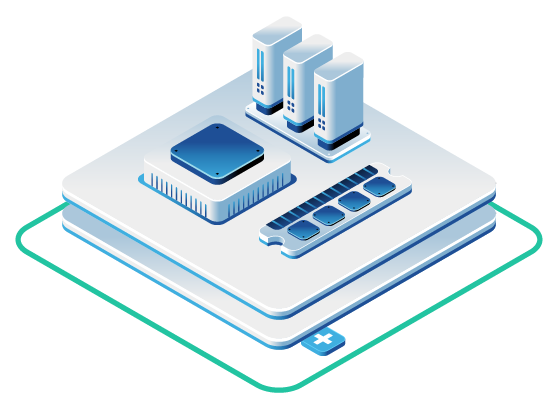In this article
- Understanding East-West and North-South Traffic
- The Public Cloud Cost Problem
- Latency Challenges in Distributed Architectures
- Why Multi-Region Architecture Still Matters
- Strategic Data Center Placement
- The Free East-West Traffic Advantage
- Predictable North-South Bandwidth Costs
- Bringing Your Own IP Addresses
- Use Cases Optimized for This Architecture
- Building a Cost-Effective Global Architecture
- Measuring Success
- Technical Implementation Considerations
- Common Pitfalls and Solutions
- Migration Strategy
- Wrapping Up
When you’re running applications across multiple continents, two problems quickly rise to the surface: unpredictable network costs and frustrating latency. The public cloud promises global reach, but that reach comes with a price tag that grows every time your data crosses a regional boundary.
If you’ve ever watched your cloud bill spike after launching a multi-region deployment, or struggled to explain why your European users experience slower response times than your American ones, you already know these pain points well. The architecture choices you make to serve a global user base shouldn’t come with a financial penalty or performance compromise.
This is where understanding the fundamental patterns of network traffic becomes necessary. Every distributed system deals with two distinct types of data movement, and how you handle each determines both your application’s responsiveness and your monthly infrastructure costs.
Understanding East-West and North-South Traffic
In cloud architecture, network traffic follows two primary patterns, each with different characteristics and implications for your system.
North-south traffic represents communication between your infrastructure and the outside world. When users request data from your application, download files, or stream content, that’s north-south traffic moving across your internet gateway. This is the visible traffic that directly impacts user experience.
East-west traffic represents communication within your infrastructure. Database replicas syncing data between regions, microservices calling internal APIs, distributed cache invalidation, and machine learning models sharing parameters across training nodes all generate east-west traffic. In distributed cloud databases, optimizing internal data transfer patterns heavily impacts overall system performance.
The challenge grows when your infrastructure spans multiple geographic locations. Every time a service in Virginia needs data from a database in Singapore, or when a cache in Amsterdam invalidates an entry that needs propagation to California, east-west traffic crosses regional boundaries.
The Public Cloud Cost Problem
Public cloud providers have built their business model around metered usage, and nowhere is this more apparent than in egress pricing. When data leaves a cloud region, you pay by the gigabyte at rates that typically range from $0.08 to $0.12 per GB.
For organizations running globally distributed applications, these charges accumulate rapidly. Consider a multi-region database setup with three replicas across continents. Every write operation must replicate to other regions. Every cache invalidation must propagate. Every distributed query might pull data from multiple locations. Those data transfer charges can easily represent 20-30% of your total infrastructure spend.
The unpredictability makes budgeting difficult. Traffic spikes during high-demand periods create corresponding spikes in egress costs, often with no warning until the bill arrives. This creates a detrimental incentive: architectural decisions get driven by cost avoidance rather than technical merit.
You find yourself asking questions like “Should we denormalize this data to avoid cross-region queries?” or “Can we tolerate stale cache data to reduce replication frequency?” These are compromises forced by pricing models, not engineering requirements.
Latency Challenges in Distributed Architectures
Beyond cost, latency poses the second major challenge for global deployments. Physical distance creates unavoidable delays, with cross-region data transfer typically adding single-digit milliseconds between availability zones.
But latency compounds across distributed operations. When a user request triggers a chain of microservice calls—load balancer to frontend service to backend API to database to message queue—each hop across availability zones adds delay. In some scenarios, cumulative latency from multiple cross-zone hops can add dozens of milliseconds to every request.
For latency-sensitive applications, these delays matter tremendously. Real-time collaboration tools, financial trading platforms, online gaming, and video conferencing all require sub-100ms response times. When your baseline latency starts at 50-100ms due to geographic distance, you have almost no headroom for application-level processing.
Database queries particularly suffer from geographic distribution. Distributed databases must balance data consistency, partition tolerance, and availability across regions, often requiring multiple round trips to coordinate transactions. Query latencies that would be 5-10ms in a single region can balloon to 200-400ms when queries span continents.
Why Multi-Region Architecture Still Matters
Despite these challenges, distributing your infrastructure globally remains essential for many applications. Users expect fast response times regardless of their location. Research indicates that reducing latency from 500ms to 10ms dramatically improves real-time interaction quality.
Regulatory requirements often mandate data residency within specific jurisdictions. GDPR in Europe, data localization laws in China, and industry-specific compliance requirements mean you can’t simply run everything from a single US data center.
Business continuity demands geographic redundancy. Distributing resources across availability zones and regions provides fault tolerance against localized outages, ensuring your application remains available even during infrastructure failures.
The question isn’t whether to build multi-region architectures, but how to do so without incurring punishing costs and performance penalties.
Strategic Data Center Placement
Location strategy forms the foundation of low-latency global infrastructure. Positioning compute resources near user populations reduces round-trip time for every request.
OpenMetal operates Tier III data centers in four strategically positioned global locations: Ashburn, Virginia; Los Angeles, California; Amsterdam, Netherlands; and Singapore. These locations provide sub-30ms latency to major user populations across North America, Europe, and Asia-Pacific.
Ashburn serves as the hub for US East Coast and much of the eastern United States, where significant enterprise and government infrastructure concentrates. Los Angeles provides low-latency access to the US West Coast and serves as a gateway to Pacific connectivity.
Amsterdam positions you at the heart of Europe’s internet infrastructure, offering excellent connectivity to the UK, central Europe, and Scandinavia. Singapore functions as the APAC hub, providing fast access to Southeast Asia, Australia, and parts of East Asia.
This positioning lets you deploy infrastructure where your users actually are, rather than forcing everyone through distant data centers. When a user in Tokyo accesses your application hosted in Singapore instead of Virginia, you eliminate 150ms of network latency before any application code executes.
The Free East-West Traffic Advantage
Here’s where the economics shift dramatically: OpenMetal provides completely unmetered private network traffic between servers. When your database in Virginia replicates to your instance in Amsterdam, that transfer incurs zero data charges. When your distributed cache in Singapore syncs with California, zero cost. When your machine learning training job shares model parameters between all four regions, zero cost.
Each OpenMetal server provides dual 10 Gbps NICs delivering 20 Gbps aggregate bandwidth with customer-specific VLANs for hardware-level isolation and full VXLAN support. This high-performance private network infrastructure connects your global deployment at line speed without accumulating transfer charges.
The architectural implications are substantial. You can design distributed systems based on technical requirements rather than cost considerations. Questions like “How frequently should we replicate data?” or “Should we run distributed queries?” get answered based on application needs, not billing anxiety.
Distributed Database Deployments
For globally distributed databases like Apache Cassandra or CockroachDB, free east-west traffic eliminates a major operational cost. These databases continuously replicate data between nodes to maintain consistency and availability. In environments where cross-region transfer costs $0.10/GB, a database cluster writing 100GB daily across three regions generates $30,000 in annual transfer charges—before accounting for read queries, repairs, or administrative operations.
With unmetered east-west traffic, you can implement multi-region Cassandra rings or CockroachDB clusters without worrying about replication costs. Configure replica placement based on latency and fault tolerance requirements, not billing optimization.
Multi-Region Caching Architectures
Redis clusters deployed globally benefit tremendously from free east-west traffic. Cache invalidation patterns that propagate across regions, data replication for read scaling, and distributed cache warming all generate substantial internal traffic.
Consider a content delivery scenario where your application caches processed images, API responses, and session data across four regions. Every cache write must replicate to other regions for consistency. Every popular item gets replicated for read performance. On public cloud infrastructure, these patterns quickly generate hundreds of gigabytes in cross-region transfer.
Free east-west traffic lets you build sophisticated caching strategies without cost penalties. Implement cache-aside patterns with global consistency, use write-through caching across regions, or deploy distributed cache warming without financial constraints.
Distributed Analytics Workloads
Big data analytics frameworks like Apache Spark or Presto benefit from free internal data transfer. These systems shuffle data between nodes during processing, with shuffle volumes often exceeding the original dataset size by several multiples.
When analytics workloads span regions, perhaps because data originates in multiple geographic locations, shuffle traffic crosses regional boundaries. In distributed data processing, optimizing data partitioning and transfer patterns is critical for performance. But those optimization efforts become moot when transfer costs dominate your operational expenses.
Free east-west traffic means you can partition data by logical boundaries rather than geographic ones. Run Spark jobs that pull data from all regions for global analysis. Deploy Presto clusters that query data warehouses distributed across continents. Build data pipelines that aggregate information from regional sources without accumulating transfer charges.
Predictable North-South Bandwidth Costs
While east-west traffic flows freely, north-south traffic—data moving between your infrastructure and the internet—still incurs costs. But OpenMetal’s approach differs fundamentally from per-gigabyte egress charges.
Instead of metering every byte, OpenMetal uses 95th percentile billing. Each server includes generous bandwidth allocation (1 Gbps provides approximately 180TB monthly at typical utilization patterns). The system measures your usage continuously but bills based on the 95th percentile of samples, excluding the top 5% of traffic spikes.
This billing model means traffic bursts don’t create cost explosions. When your application experiences a spike—perhaps due to media coverage, a marketing campaign, or simply busy season—you won’t face throttling or surprise charges. The system handles burst traffic naturally, and you only pay for sustained baseline capacity.
Overages are billed at $0.37 per Mbit per week on sustained usage above included capacity. This predictable, capacity-based model contrasts sharply with per-gigabyte charges where traffic spikes can double or triple monthly costs.
Real-World Cost Comparison
Consider an application serving 50TB of egress traffic monthly, with occasional spikes to 75TB during peak periods. On AWS with standard $0.09/GB egress pricing:
- Baseline month: 50,000 GB × $0.09 = $4,500
- Peak month: 75,000 GB × $0.09 = $6,750
- Annual range: $54,000-$81,000
With OpenMetal’s 95th percentile billing excluding spikes, you pay for baseline capacity with no surprise charges during peak demand. Organizations migrating from public cloud report 30-60% overall cost reductions, with bandwidth costs representing a significant portion of those savings.
Bringing Your Own IP Addresses
OpenMetal supports BYOIP (Bring Your Own IP), letting you maintain consistent IP addressing across all regions. This capability provides several advantages for globally distributed workloads.
First, it simplifies DNS management. Instead of mapping different regional endpoints to different IP ranges, you can use anycast or GeoDNS to direct users to the nearest regional instance while maintaining a unified address space.
Second, it eliminates IP address migration issues when moving workloads between providers or regions. Your IP addresses move with your infrastructure, preventing the DNS propagation delays and potential downtime associated with address changes.
Third, it maintains IP reputation for services where this matters like email systems, API endpoints with IP-based authentication, or security systems that allow specific addresses.
Combined with fixed-cost bandwidth and free east-west traffic, BYOIP enables truly portable multi-region architecture where you can relocate workloads based on performance, cost, or business requirements without network-level disruption.
Use Cases Optimized for This Architecture
Certain workload patterns benefit particularly from the combination of strategic geographic placement, free east-west traffic, and predictable bandwidth costs.
Globally Distributed Databases with Regional Query Latency
Applications requiring strong consistency across regions while maintaining fast local reads fit this model perfectly. Deploy database nodes in Virginia, California, Amsterdam, and Singapore. Configure regional read replicas for query performance. Let data replicate freely between regions without cost penalties.
Users in each region query their local database node, achieving sub-10ms query latency. Write operations propagate across regions maintaining consistency, but the replication traffic incurs no charges. The result: fast global reads with consistent data and predictable costs.
ML Training Distributed Across Geographies
Machine learning training workloads often benefit from geographic distribution. Training data might originate in different regions due to privacy regulations or simply because data collection happens globally.
Distributed training frameworks split model training across multiple nodes, with frequent parameter synchronization between nodes. This synchronization creates substantial network traffic as gradients and model weights transfer between workers.
Free east-west traffic eliminates the cost barrier to distributed ML training. Deploy training nodes across all four regions. Let each node process locally-stored data. Synchronize model parameters freely across regions. The unmetered private network handles the high-bandwidth parameter exchange without cost accumulation.
Real-Time Analytics Processing Data Locally with Global Aggregation
Real-time analytics systems often follow a pattern of local processing with global aggregation. User activity data gets processed regionally to extract insights, then aggregated centrally for company-wide analytics.
This pattern generates substantial east-west traffic as regional processing nodes send aggregated results to central systems, and central systems distribute updated models or rules back to regional processors.
With free east-west traffic, you can implement this pattern efficiently. Deploy Apache Kafka or Apache Pulsar across all regions for event streaming. Run regional Apache Flink or Apache Storm clusters for local processing. Aggregate results centrally without worrying about transfer costs between regions.
SaaS Applications Serving Regional APIs
SaaS platforms often deploy regional API endpoints to serve customers with low latency. Each regional deployment needs access to central systems for authentication, configuration, and shared data, while also serving regional data quickly.
This creates a pattern where north-south traffic (users accessing regional APIs) mixes with east-west traffic (regional APIs communicating with central services and each other).
Deploy your API services in all four regions. Serve users from their nearest location for fast response times. Let regional services communicate freely with central authentication, configuration services, and shared databases. The unmetered east-west traffic handles the internal communication without cost impact.
Building a Cost-Effective Global Architecture
Implementing a globally distributed architecture on OpenMetal follows several key principles.
Start Regional, Expand Strategically
Begin by identifying where your users concentrate. If 80% of your traffic originates from the United States and Europe, start with deployments in Ashburn and Amsterdam. Add Los Angeles when West Coast traffic justifies the additional presence. Expand to Singapore as APAC usage grows.
This approach lets you scale infrastructure in proportion to demand without upfront commitments to global presence.
Design for Locality
Structure your application to take advantage of regional deployment. Cache frequently accessed data locally. Process requests using regional resources. Query local database replicas for reads. Implementing zone-aware routing strategies keeps traffic within regions whenever possible, minimizing latency.
When cross-region communication becomes necessary—for writes that need global consistency or operations requiring data from multiple regions—the free east-west traffic ensures these operations don’t drive costs.
Monitor Bandwidth Patterns
Track both north-south and east-west traffic volumes. Understanding these patterns helps you:
- Right-size bandwidth allocation per region
- Identify opportunities to cache content regionally and reduce egress
- Optimize data replication schedules
- Detect anomalous traffic patterns that might indicate issues
OpenMetal’s 95th percentile billing naturally accommodates traffic variability, but monitoring still provides valuable operational insights.
Leverage Geographic Data Distribution
Distributed databases support various partitioning strategies, from hash-based to geographic. For globally distributed applications, geographic partitioning often provides the best balance of performance and consistency.
Store European user data primarily in Amsterdam, American data in Ashburn and Los Angeles, and Asian data in Singapore. Configure cross-region replicas for fault tolerance. Users primarily access locally stored data, achieving fast query performance, while the free east-west traffic handles replication without cost impact.
Measuring Success
Track several metrics to evaluate your global infrastructure’s performance and cost-effectiveness.
Regional response time: Monitor API response times from each geographic region. Target sub-50ms response times for users accessing their regional endpoint. This demonstrates that your geographic distribution provides meaningful latency improvements.
Cross-region operation latency: Measure latency for operations requiring cross-region data access—global queries, writes requiring multi-region consistency, or aggregations combining regional data. Even though these operations involve geographic distribution, they should complete in reasonable time frames (typically under 200ms).
Bandwidth utilization versus allocation: Track whether your allocated bandwidth matches actual usage patterns. If you consistently operate well below allocation, you might be over-provisioned. If you frequently approach limits, increasing allocation may improve performance headroom.
East-west traffic volume: Monitor internal traffic between regions. High east-west traffic volumes that would be expensive on public cloud demonstrate the value of unmetered private networking. This metric also helps identify chattier services that might benefit from optimization.
Total cost of infrastructure: Compare all-in infrastructure costs to equivalent public cloud deployments. Factor in compute, storage, bandwidth, and management overhead. Organizations migrating from public cloud typically realize 30-60% cost reductions, with bandwidth costs representing a significant component of those savings.
Technical Implementation Considerations
Several technical factors influence successful global deployment on this architecture.
Database Selection and Configuration
Choose databases with strong multi-region support. Cassandra, CockroachDB, MongoDB, and PostgreSQL (with extensions like Citus) all provide geographic distribution capabilities, but their consistency models and configuration options differ.
Cassandra excels at high-write workloads with tunable consistency and offers excellent geographic distribution through its multi-datacenter support. CockroachDB provides strong consistency with ACID transactions across regions, at the cost of higher write latency for global operations.
Configure replication factors based on fault tolerance requirements. Three-way replication across three of your four data centers provides resilience against single-region failures while maintaining quorum-based operations.
Load Balancing and Traffic Distribution
Implement geographic load balancing to direct users to their nearest regional endpoint. Options include:
GeoDNS: DNS-based routing sends users to regionally appropriate IP addresses based on their location. This approach is simple but provides limited failure detection capabilities.
Anycast routing: Announce the same IP prefix from multiple regions. BGP routing directs traffic to the nearest regional point of presence. This provides automatic failover but requires BGP configuration.
Global load balancers: Services like Cloudflare or third-party global load balancers can intelligently route traffic based on health checks, latency measurements, and capacity.
Combine global routing with local load balancing within each region to distribute traffic across multiple servers.
Data Synchronization Patterns
Different applications require different data synchronization approaches. Real-time synchronization maintains consistency at the cost of write latency. Eventual consistency allows faster writes but requires applications to handle stale reads.
For applications where staleness is acceptable, implement asynchronous replication. Write operations complete locally, with replication happening in the background. Free east-west traffic means replication frequency can be driven by business requirements rather than cost constraints.
For applications requiring strong consistency, implement synchronous replication where writes must confirm to multiple regions before completing. Accept higher write latency in exchange for guaranteed consistency.
Monitoring and Observability
Implement comprehensive monitoring across all regions. Track application performance metrics, infrastructure health, and network throughput. Distributed tracing helps identify performance bottlenecks in multi-region request flows.
Monitor cross-region latency actively using synthetic probes. Measure round-trip time between all regional pairs. Sudden latency increases can indicate network issues requiring attention.
Alert on anomalous traffic patterns that might indicate security issues, configuration problems, or application bugs causing unexpected data transfer.
Common Pitfalls and Solutions
Several common issues arise when implementing globally distributed architectures.
Over-Replication
Excessive replication wastes resources and can actually harm performance. Replicating data to regions where it’s rarely accessed consumes storage and generates synchronization traffic without providing benefit.
Solution: Implement geographic partitioning where data lives primarily in regions where it’s accessed, with selective replication to other regions only when necessary for fault tolerance.
Chatty Inter-Service Communication
Microservices architectures sometimes create excessive service-to-service traffic. While free east-west traffic eliminates cost concerns, chattiness still creates latency and resource consumption issues.
Solution: Implement API gateways within each region, deploy service mesh for optimized routing, batch operations where possible, and consider regional service collocation for services that communicate frequently.
Inconsistent Regional Deployment
Deploying different service versions or configurations to different regions creates operational complexity and potential consistency issues.
Solution: Use infrastructure-as-code and CI/CD pipelines that deploy identical configurations to all regions. Maintain configuration management that tracks regional differences when they’re necessary.
Insufficient Monitoring Coverage
Partial monitoring leaves blind spots where issues can hide. Without comprehensive visibility across all regions, you can’t identify performance problems or capacity constraints.
Solution: Implement unified monitoring across all regions with centralized dashboards, deploy synthetic monitoring from multiple geographic locations, and set up alerts that account for regional variations.
Migration Strategy
Moving existing applications to a globally distributed architecture requires careful planning.
Phase 1: Assessment and Planning
Start by understanding current traffic patterns. Where do your users access your application from? What are current response times by region? Which operations currently cause performance issues?
Analyze your application architecture. Which components can be deployed regionally? Which require global scope? What data needs replication versus what can be regionally isolated?
Create a phased rollout plan targeting highest-impact regions first.
Phase 2: Pilot Deployment
Deploy to a single new region as a pilot. This validates your architecture and deployment processes without the complexity of multi-region coordination.
Run the pilot in production with a subset of users. Measure performance improvements, validate replication patterns, and identify issues before expanding further.
Phase 3: Multi-Region Expansion
Once the pilot validates your approach, expand to additional regions. Implement monitoring, alerting, and operational procedures for multi-region management.
Configure data replication between regions, test failover procedures, and validate that users experience performance improvements when accessing regional endpoints.
Phase 4: Optimization
With multi-region deployment operational, optimize based on observed patterns. Adjust caching strategies, fine-tune replication, and identify opportunities to further regionalize operations.
Wrapping Up: Latency and Egress for Globally Distributed Workloads
Building globally distributed applications requires balancing performance, cost, and operational complexity. Traditional public cloud approaches force compromises: either accept high bandwidth costs for optimal architecture, or constrain your design to minimize data transfer at the expense of performance and maintainability.
OpenMetal’s combination of strategically located data centers, completely unmetered east-west traffic, and predictable 95th percentile bandwidth billing changes this calculation. You can build distributed architectures based on technical merit rather than cost avoidance.
Deploy database replicas where they make sense for performance and resilience. Implement multi-region caching without worrying about invalidation traffic costs. Distribute ML training geographically to process data locally. Build real-time analytics with local processing and global aggregation.
The question isn’t whether to build globally distributed systems—for many applications, geographic distribution is necessary for performance, compliance, or business requirements. The question is how to do so without sacrificing your budget to unpredictable bandwidth charges. By eliminating the “data tax” that public clouds impose on distributed architectures, OpenMetal lets you focus on building applications that serve your global users effectively.
Schedule a Consultation
Get a deeper assessment and discuss your unique requirements.
Read More on the OpenMetal Blog


































